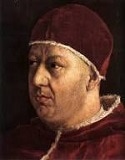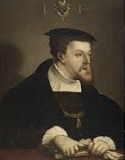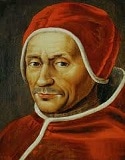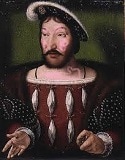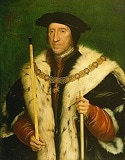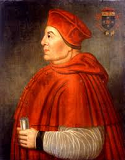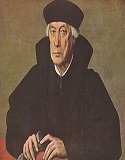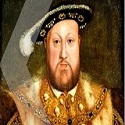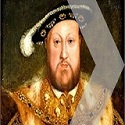Henry VIII, the Reign |
Mary Rose and the DivorceDeath of a Pope, Charles on the Hop |
|
Death of a Pope, Charles on the Hop
It was 29 August before the cardinal arrived back in Calais, and he and his diplomats, one of whom was Thomas Boleyn, had to choreograph some deft diplomatic moves to persuade the French delegation that there had been no double-dealing in Bruges. Indeed the peace talks continued on until November 1521, and Wolsey’s main purpose from that point on was to fool the French into believing England was friendly and neutral. Wolsey, with his pledge from Charles that he would be the next pope, sailed back to England on 28 November 1521. Pope Leo X died on 1 December. He died so suddenly that there was no time to administer the last sacraments. The timing of his death could not have been more spectacular if Wolsey had contrived it himself. Wolsey was entered as a candidate for the subsequent papal election. The sudden turn of events caught Charles on the hop, however; conveniently for him, when the election was held rival Italian factions caused chaos in Rome. The infighting allowed Charles to slip Adrian, his regent in Spain, into the papal office as Pope Adrian VI. With that appointment, the emperor could stall Wolsey, bluff him with a story as a sop about Adrian being a subordinate stopgap to keep the throne warm until he got back to Spain and could sort things out in Wolsey’s favour. He also told Adrian to appoint Wolsey as Abbott of St Albans, which was one of the richest monasteries in England. Spain Lauds the English ArmádaSpain Lauds the English Armáda
Adrian, therefore, was the pope but, for now, a pope who was resident in Spain. Perhaps that was where Charles intended him to stay. The spring of 1522 arrived and, having reappointed Margaret as regent, Charles departed from Brussels for Spain on 23 May. The Bruges plan to get him there safely was put into operation. Henry VIII’s herald was despatched to France to declare war on the duped French. Charles arrived at Calais on 26 May and crossed to Dover the next day escorted by the English fleet with a complement of over 10,000 men. Francis was handed the war declaration in Lyon on 29 May. It seems he was not completely surprised – perhaps Wolsey’s bluffing had not been so convincing. On 6 June, Charles and Henry went from Greenwich to London, surrounded along the way by cheering crowds. Amid all the pomp and ceremony, a few days later they went on to Windsor and held further talks about Wolsey’s papal aspirations. From there they continued on towards Southampton, signing treaties along the way. The Mary Rose was moored at Southampton and Thomas Howard, Earl of Surrey, was aboard. He was busy writing stroppy letters to Wolsey about the lack of victuals and the uncooperative Venetian sailors. Howard had been appointed Admiral of the Fleet. That is to say, he was in charge of both the English and the Spanish navies, which were tasked with returning Charles to Spain unharmed. At the end of June, Howard sailed west from Southampton towards Dartmouth. He waited at Dartmouth and by 1 July 1522 had sailed across the Channel with his task force and was on the lookout for any maritime threat to Charles’s route home. He sacked the French port of Morlaix. He then sailed west to Saint-Pol-de-Léon and burned it down and then sailed on to the most westerly port in France, Le Conquet, and burned that down too. Howard and the Mary Rose had made the way safe, and Charles left England from Southampton for Spain on 7 July. |
|
Escorted by the English navy and Spanish ships under English command, the Holy Roman Emperor was soon back in Spain.
|
